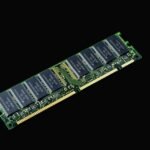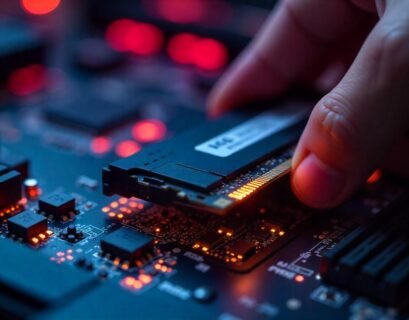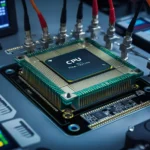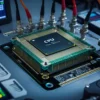Introduction
Random Access Memory (RAM) has undergone a significant evolution since its inception. Initially created to address the need for quick, volatile storage that allows a computer to handle multiple tasks simultaneously, RAM has transformed over the decades into a sophisticated component fundamental to modern computer performance. The purpose of this article is to explore the history of RAM, uncover technological innovations that have reshaped the landscape of memory, provide industry insights into what makes a memorable upgrade, and analyze the future outlook for RAM and memory technology as a whole.
A Brief History of RAM
RAM has roots in the early days of computing. The first types were magnetic-core memory systems, prevalent in the 1950s and 1960s. Although these systems were bulky and power-hungry, they enabled early computers to function with a degree of efficiency previously unattainable. The shift towards semiconductor memory in the 1970s marked a notable milestone with the introduction of Static RAM (SRAM) and Dynamic RAM (DRAM).
Static RAM (SRAM) retains data bits as long as power is provided, making it faster but more expensive than DRAM. This made SRAM a preferred choice for cache memory. Conversely, Dynamic RAM (DRAM) required periodic refreshing but could store more data in a smaller space, thereby becoming the standard RAM for main memory in personal computers.
In the late 1990s and early 2000s, advances in DRAM technology introduced mainstream types like SDRAM, DDR (Double Data Rate), and its subsequent iterations—DDR2, DDR3, and DDR4. Each generation brought improvements in speed, power efficiency, and bandwidth, drastically impacting the performance of computers and other devices.
Technological Innovations in RAM
1. DDR4 and Beyond
As of now, DDR4 RAM is widely adopted, offering substantial improvements over its predecessor, DDR3. DDR4 modules typically offer speeds ranging from 2133 MT/s to 4266 MT/s, with higher capacities available, up to 64GB per module. The reduction in voltage requirements (from 1.5V for DDR3 to 1.2V for DDR4) contributed significantly to energy efficiency.
Recent advancements introduced DDR5 RAM, which began hitting the market in late 2020. This new generation promises even greater speed and efficiency with capabilities of reaching up to 8400 MT/s and higher bandwidths. DDR5 doubles the channel width compared to DDR4, allowing for increased memory capacity and performance improvements in both gaming and professional workloads.
2. LPDDR RAM
Low Power Double Data Rate (LPDDR) RAM is another significant innovation aimed at mobile devices. LPDDR technologies are optimized for low power consumption, making them ideal for smartphones, tablets, and laptops, where battery life is a critical factor. LPDDR4 and LPDDR5 have been developed to provide efficiency alongside significant performance enhancements in powered devices.
3. HBM Technology
High Bandwidth Memory (HBM), which leverages 3D stacking, allows multiple memory dies to be stacked on top of each other, providing memory bandwidth much higher than conventional RAM technologies. HBM is primarily used in high-performance computing (HPC), graphics processors, and applications requiring immense data processing capabilities.
Understanding Memory Specifications: What to Look For
When considering RAM upgrades, it’s essential to understand the specifications and features that impact performance. Here are the key considerations:
1. Memory Type
Ensure compatibility between the motherboard and RAM type. DDR4 and DDR5 RAM are not interchangeable; thus, knowing your existing hardware’s specifications is crucial when upgrading.
2. Capacity
Increasing RAM capacity can significantly impact multitasking and performance. For average users, 16GB is often sufficient, while 32GB or more may be beneficial for heavy gamers, graphic designers, or video editors. Always analyze software needs to determine the optimal memory capacity.
3. Speed
RAM speed, represented in Frequencies (MHZ or MT/s), affects how fast data can be read and written. Higher speeds improve performance but provide diminishing returns beyond certain points. For gaming systems, RAM that operates between 3200MHz and 3600MHz is often viewed as an optimal balance of performance and cost.
4. Timings and Latency
Memory timings represent the delay in cycles before data is available after a request is made. Lower timings (e.g., CAS Latency) mean better performance. However, it is essential to evaluate the impact of timings relative to speed and capacity.
5. Dual Channel vs. Single Channel
The use of dual-channel memory can effectively double the bandwidth between the RAM and CPU. When purchasing new memory, opt for a dual-channel kit that ensures two identical sticks are installed, optimizing performance for compatible motherboards.
Industry Insights: What to Watch
1. Supply Chain Dynamics
Recent global events have highlighted vulnerabilities in semiconductor supply chains, affecting RAM availability and pricing. Observing industry trends and market forecasts can provide insight into potential pricing fluctuations and availability.
2. Application Demand Trends
With new emerging technologies such as artificial intelligence and machine learning, the demand for high-performance RAM is expected to surge. Professionals looking to enhance their workflows in these areas will want to focus on RAM types and configurations optimized for these applications.
3. The Role of Gaming
The gaming industry fuels many innovations in RAM technology. With the rise of 4K gaming and virtual reality, higher bandwidth and faster speeds are critical for immersive experiences. Gamers should anticipate future RAM upgrades that may focus on extreme speeds and dissipating heat efficiently.
4. Influence of Cryptocurrency
The cryptocurrency boom has previously placed a unique strain on RAM production—especially GDDR RAM used in graphics cards. Observing how cryptocurrency market dynamics influence RAM demand and availability can help inferred investment decisions.
Future Outlook for RAM Technology
1. Emerging Standards
We are beginning to see discussions arise about DDR6, expected to further break performance boundaries. Innovations are already underway to enhance memory speeds, power efficiency, and capacity.
2. Integration with AI and Quantum Computing
Future RAM technologies may also adapt to facilitate synergistic relationships with emerging technologies, such as AI and quantum computing. Memory architectures may shift toward more integration with processing units to reduce latency, ultimately bolstering performance efficiency.
3. NV RAM
Non-Volatile RAM (NVRAM), such as MRAM (Magnetoresistive RAM) or FRAM (Ferroelectric RAM), shows promise as future memory technologies. NVRAM retains data without power, offering both high speed and permanence that could reshape how memory is viewed in computing.
Conclusion
The evolution of RAM reflects the dynamic nature of memory technology, underpinned by innovations that enhance performance, efficiency, and capacity. As we look ahead, ongoing advancements in DRAM, LPDDR, HBM, and emerging non-volatile technologies promise to continue reshaping the role of memory in computing environments.
Understanding the essentials—compatibility, speed, capacity, and efficiency—is key for anyone considering an upgrade. This knowledge equips users to make informed choices that optimize their workflows, improve performance, and future-proof their systems amid rapid technological progress.
The world of RAM is evolving and, undoubtedly, the best is yet to come as we move into more sophisticated computing eras specializing in AI, machine learning, gaming, and innovative computing tasks. Whether you’re a gamer, content creator, or an average user, understanding RAM’s evolution and trends enhances the chances of making intelligent technology investment decisions today and in the future.


















